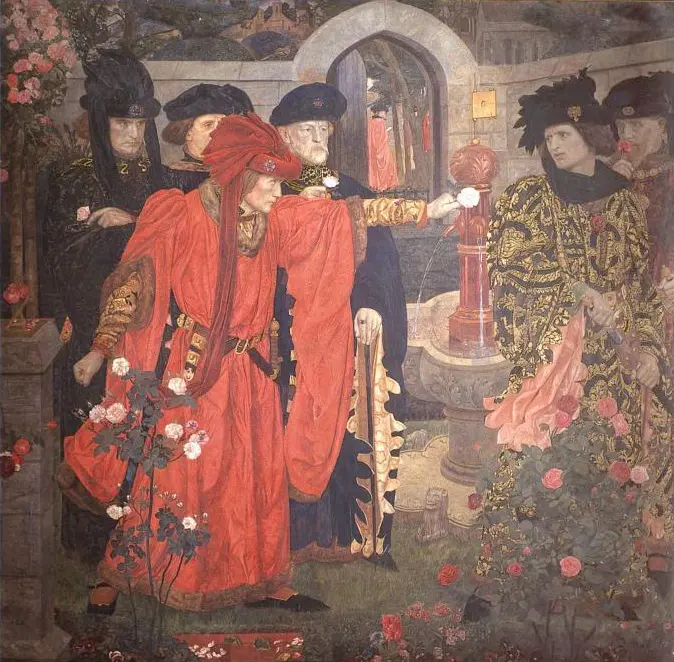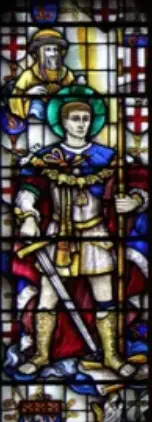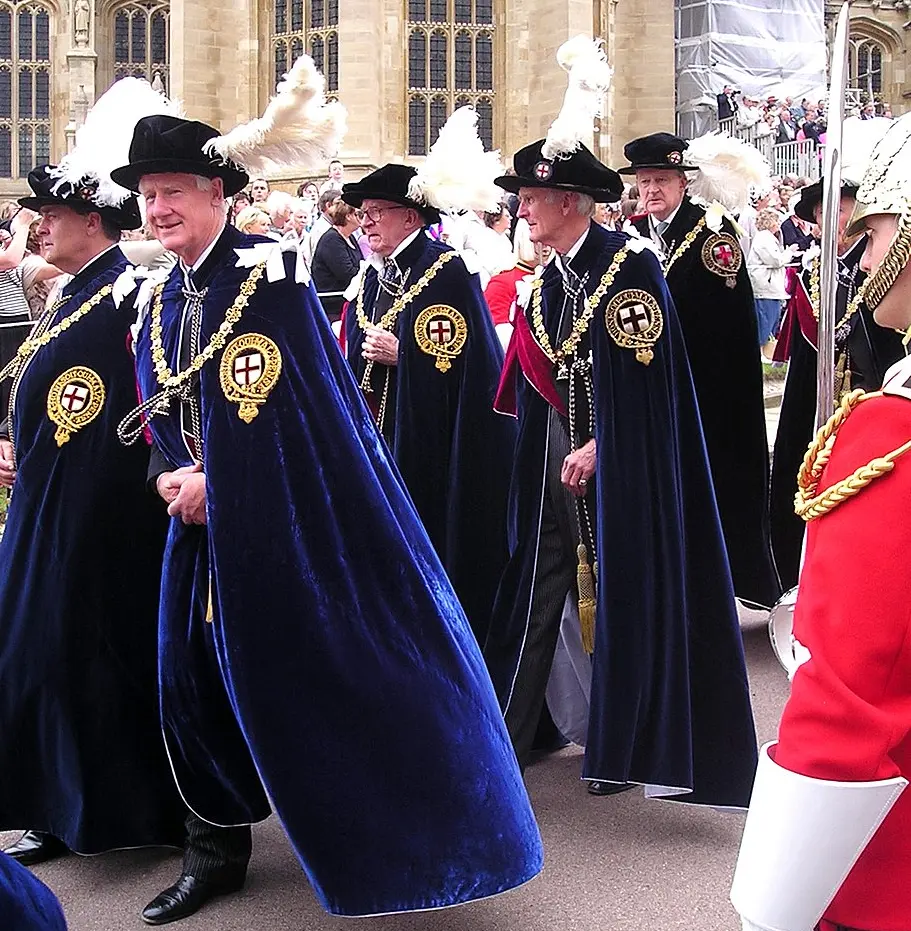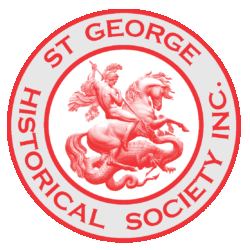A Patron (patronus) according to Roman law was a protector or defender. The Patron Saint of England is St George or Edward the Confessor. England’s symbol is the red rose.
The War of the Roses (1455-1485) was the name given to the struggle between the noble House of York, whose badge was a white rose, and the noble House of Lancaster, whose badge was a red rose, for the throne of England. Many attempts were made to place Yorkist pretenders on the throne during this civil battle but the Lancastrian King Henry VII (Henry Tudor) succeeded and thereabouts united the houses of York and Lancaster.
William Shakespeare immortalised the quarrel which led to the War of the Roses in Henry VI, Part I when in the garden of the Inner Temple, Richard Plantagenet and his supporters each plucked a white rose, and the Duke of Somerset and his companion plucked a red rose. Roses still bloom each summer in London’s Inner Temple Garden.

Doesn’t this bring to mind St George District’s colours of Red / White?
William Shakespeare was born April 23, 1564 (baptised three days later) St George’s Day. He died April 23, 1616 – again St. George’s Day!

Only one church of pre-19th century London bears the patron saint’s name and that is St George the Martyr. Henry V prayed at this Southwark Church for success at the Battle of Agincourt in 1415.
There is a romantic legend also of St George which tells the tale of the King of the Libyan province of Silene’s much loved and beautiful daughter about to be sacrificed to appease a dragon who was devouring the villagers. St George riding his white horse slew the dragon and saved the maiden’s life. This myth was adopted by the Crusaders as a morale booster, thus the allegory of St George and the Dragon, triumph of Good over Evil.
The legend was brought to the fore when Edward III’s men flew the St George Flag at the 1346-47 Siege of Calais when defeating the French.
The Order of the Garter was raised when Edward III retrieved the Countess of Salisbury’s dark blue garter which slipped from her apparel, to the laughter of those of an “ungentlemanly” nature. To cover the lady’s embarrassment the King placed the velvet garter on his own leg and said “I will make of this ere long the most honourable garter that was ever worn” and so it was dedicated “in memorial of the Blessed Martyr Saint George” and so the members of this honourable order today still wear the garter as part of the traditional dark-blue dress with its collar to which is attached the symbol of St George and the Dragon, when celebrating the birthday of the Patron Saint at Windsor Castle’s St George’s Chapel.
The procession for St George’s Day, long ago dispensed with, was revived by King George VI in 1948.

Sources:
Encyclopædia Britannica, 1988
Hudson R., “The English Way of Life” – This England Magazine, Spring 1997
New Illustrated Columbia Encyclopedia, University Press, 1979
This article was first published in the March 2002 edition of our magazine.
Browse the magazine archive.

